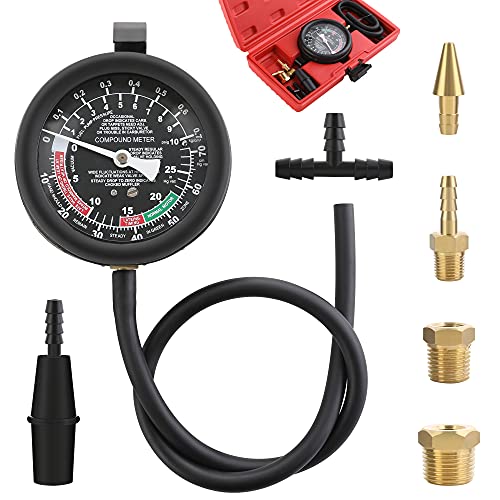Vacuum gauges are one of the most valuable but less well-known tools for mechanics. And if you see them bouncing at idle when you use them, you may wonder what's wrong. That's why we researched why this happens and what you should do about it. Here is what we discovered.
Uneven compression because of broken rings, leaking valves, or a blown head gasket in one or two cylinders is the possible source if the vacuum reading varies significantly within the usual range and the gauge needle jumps around a lot.
Other potential causes include:
- an uneven mixture of air and fuel
- irregular ignition timing
- a misfire
- improperly set valves
- a manifold leak close to one or two cylinders
The first place to examine whenever you notice a fast bouncing gauge is for an intake valve that is leaking for whatever reason, whether it is the valve or spring. By adding a tiny hole to the gauge line, the bouncing can be eliminated, allowing you to more accurately determine the reading.
But what should be the normal vacuum gauge reading at idle? And what are the signs that you're having problems with your engine based on your vacuum gauge? Keep reading, as we answer these questions in the succeeding sections. We'll also talk about the vacuum gauge function in your car and its benefits. Additionally, we'll discuss how to perform vacuum gauge testing.
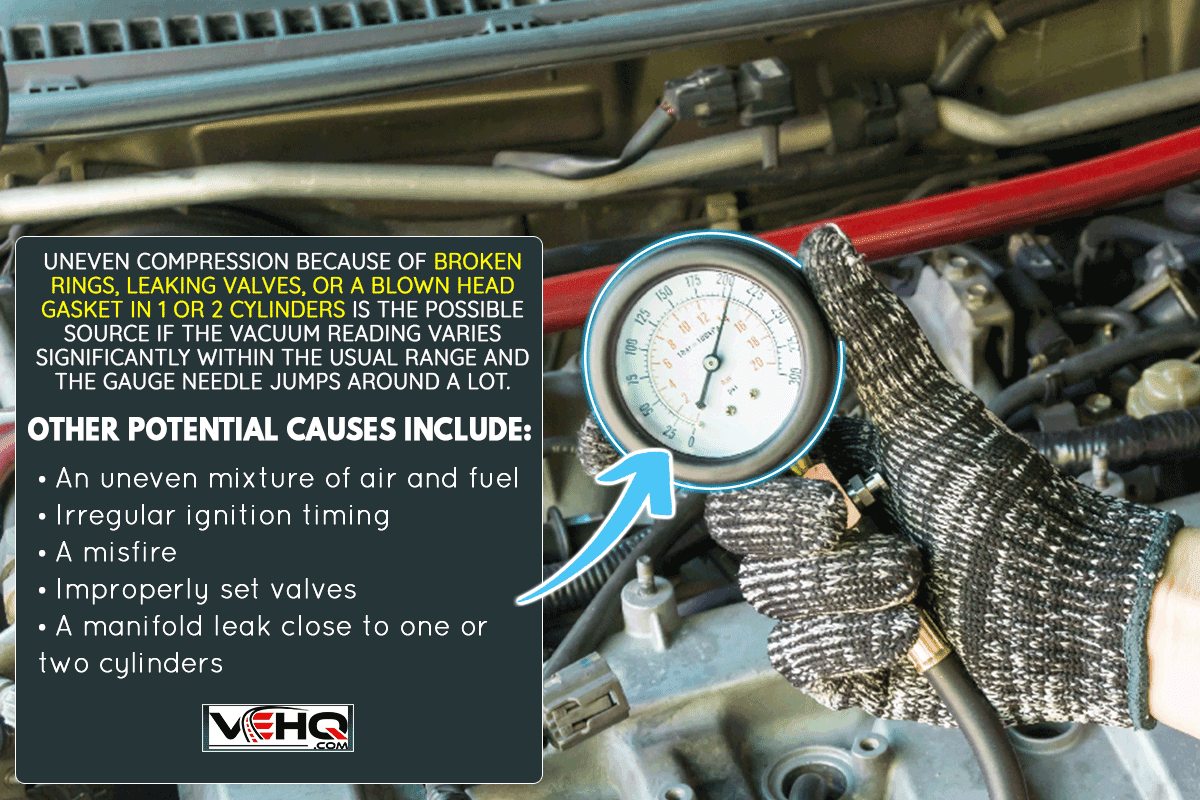
What Is A Vacuum Gauge And How Does It Work?
The vacuum gauge is made to measure the amount of air pressure inside the engine. Most gauges are frequently fastened to a nipple or a plug on the engine's intake manifold.

Engine vacuum leaks can be challenging to identify since they can appear as anything from a cracked hose to a leaky exhaust gas recirculation valve to a loose carburetor gasket. In each case, an automotive vacuum gauge can assist in narrowing down the problem's diagnosis.
See this vacuum gauge tester kit on Amazon.
What Are The Benefits Of Using An Automotive Vacuum Gauge?
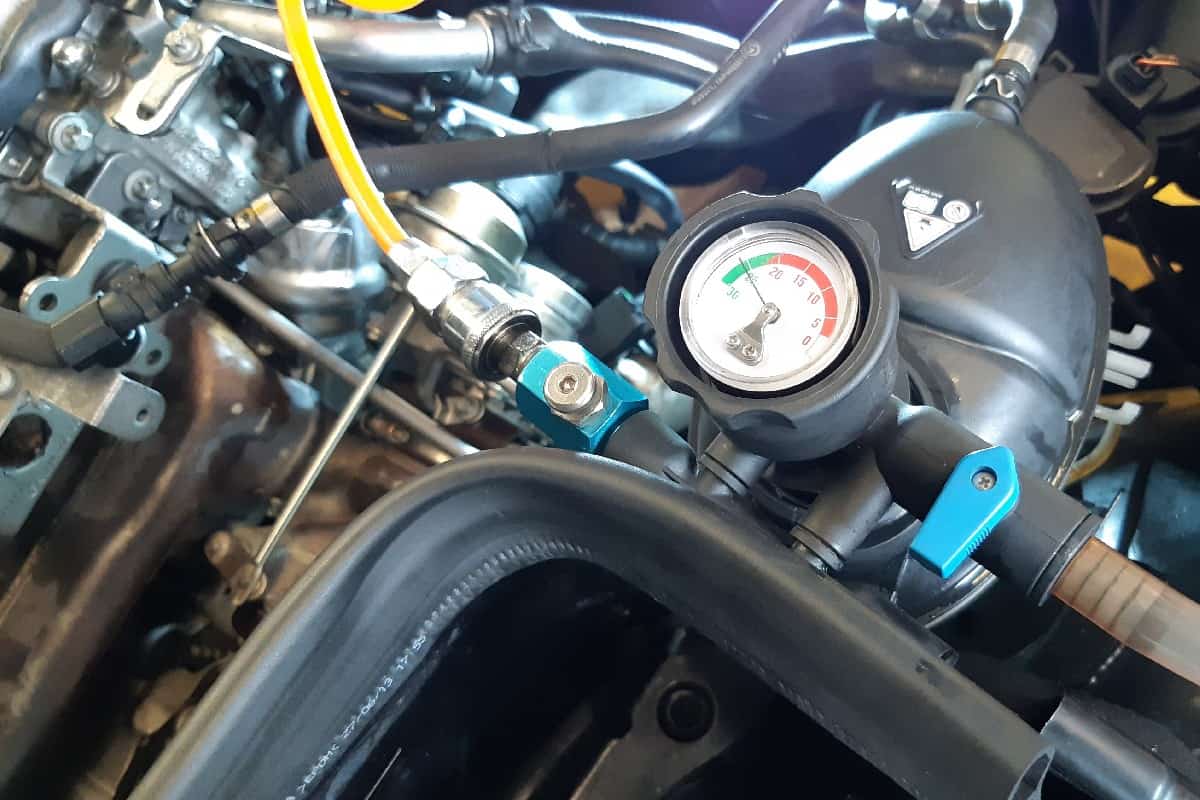
Vehicle owners who desire precise readings of the air pressure in their engines can benefit from using an automotive vacuum gauge.
Manifold vacuum is a vital component to the vehicle's efficient and clean functioning, regardless of whether you drive a modern, high-performance vehicle with fuel injection technology or an older model car with a carbureted engine.
Simply put, this is the volume of airflow that the throttle allows into the intake manifold, which in turn provides power to the car's engine. The health of this crucial component of your car can be maintained with the help of an automotive vacuum gauge.
Many auto mechanical issues can be diagnosed with a vacuum gauge without the need for costly equipment or removing the engine to inspect each component. A vacuum gauge, for instance, can locate:
- tattered piston rings and cylinder walls, a throttle body gasket, or a damaged head or manifold;
- an imbalanced carburetor;
- a congested exhaust system; and
- numerous other mechanical parts that are affecting engine performance.
How To Do A Vacuum Gauge Testing?
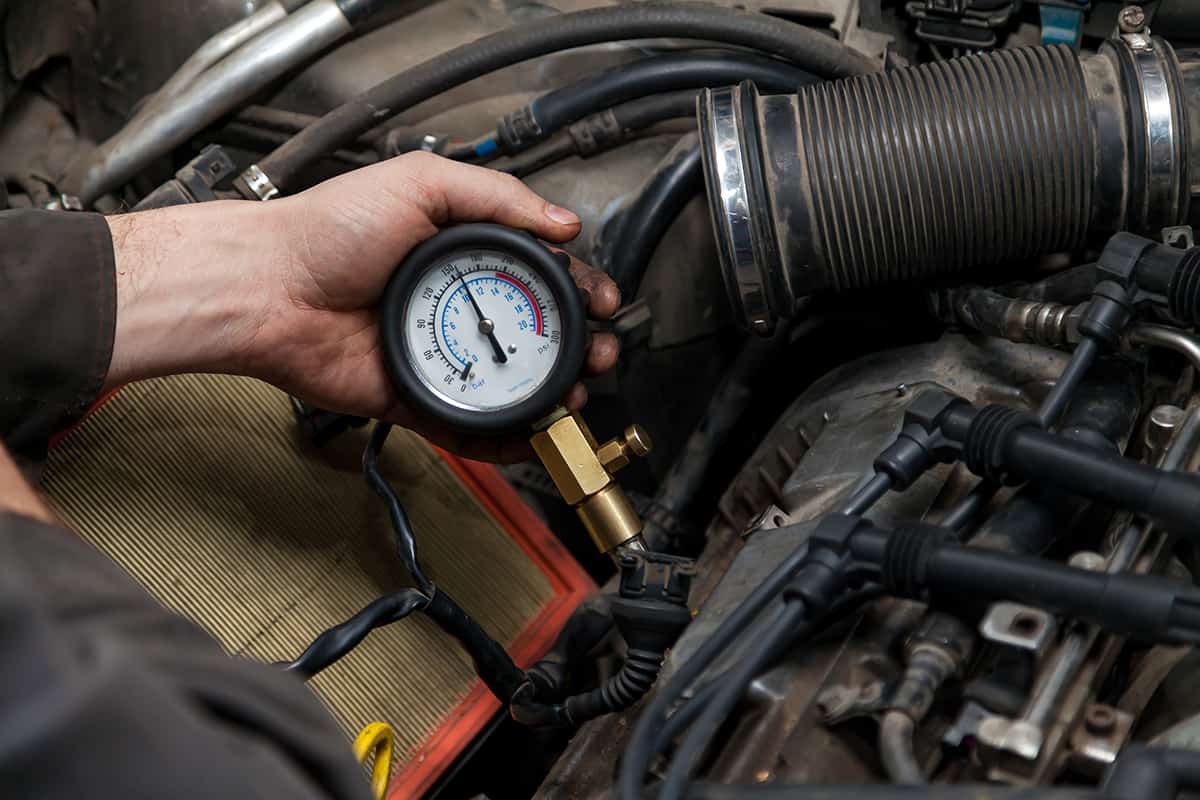
Here's how you can check the condition of your car's engine using a vacuum gauge:
Connect your vacuum gauge after getting the engine to a typical operating temperature. Be sure to connect to a manifold vacuum tap rather than ported vacuum while doing so.
Click here for this product on Amazon.
Another smart move is to connect a tachometer.
Click here for this product on Amazon.
- Run the engine at low cruise (1800–2200 rpm), high cruise, and idle (2500 to 3000 rpm). Keep track of the vacuum readings and any changes for each speed.
- After that, read the gauge while maintaining an engine speed of approximately 2500 rpm for 15 seconds.
- Release the throttle now, and as the speed decreases, see it on the gauge.
- As the throttle shuts, the vacuum meter should increase before falling to its typical idle value.
How To Interpret Vacuum Gauge Readings?
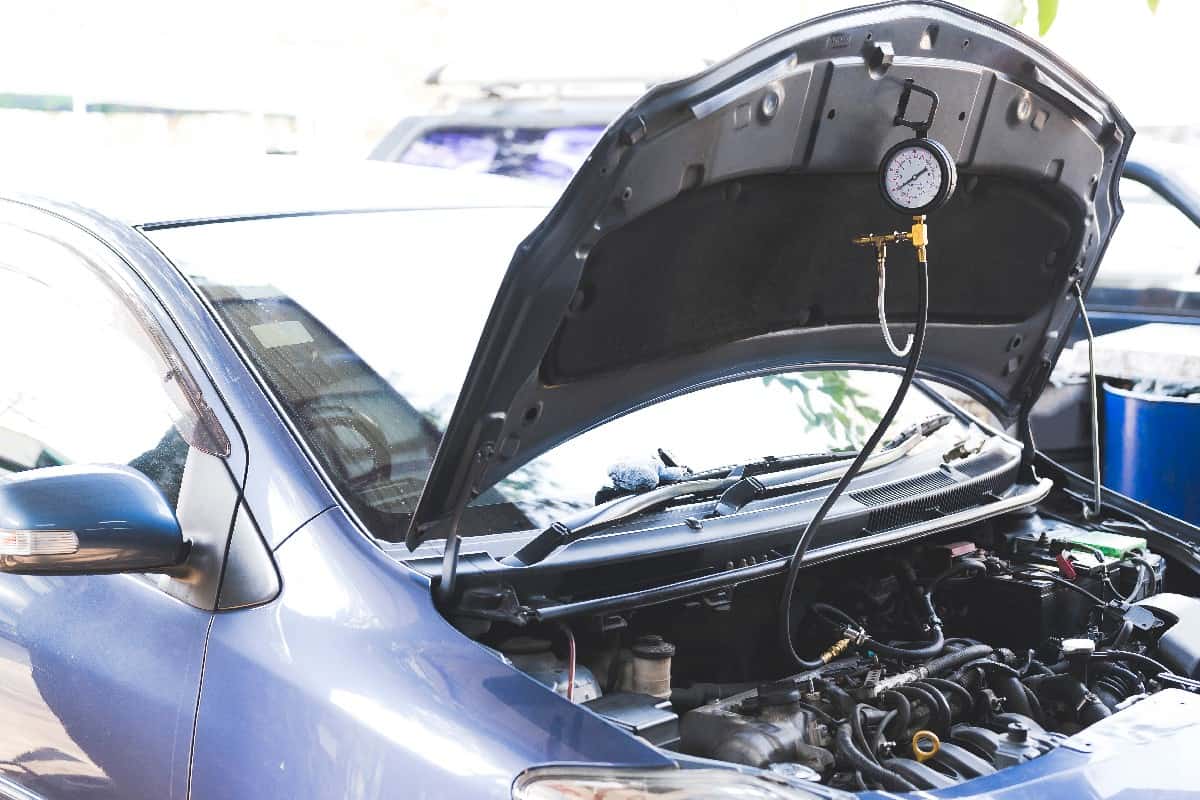
If you know how to read the gauge in the first place, an engine's vacuum measurements can reveal a great deal about its operating conditions.
Unfortunately, most vacuum gauge producers don't include simple-to-follow guidelines and diagrams to aid users in interpreting gauge readings, therefore rendering the gauges themselves useless. So, in this section, we'll show you how to read your vacuum gauge results.
Normal
This readin between 17 and 22 inches of Hg is normal. Remember that this figure is optimum for engines running at sea level with factory cams.
Readings may be a little bit lower at higher elevations. The reading should be around one inch lower for every 1,000 feet above sea level. Additionally, for cams with greater aggression, you should anticipate lower readings.
Fast Vibration At Idle
You might be dealing with worn valve guides if the needle rattles rapidly between 14 and 20 inches of Hg but then steadies as rpm rises. The number of worn valve guides may be determined by how quickly the needle vibrates.
Steady But Extremely Low
This indicates that the engine is creating less suction and less power. Blowing due to worn piston rings, as well as possible late ignition or valve timing, are common causes of steadily low readings.
An air leak at the intake manifold or throttle body may also be the cause of an exceptionally low reading.
Steady Low To High Swing
A ruptured head gasket between two adjacent cylinders is frequently indicated by a consistent swing between high and low readings. You'll need to do a compression test to be sure.
Acceleration-Induced Fluctuation
On the other hand, if the gauge's needle oscillates as the engine speeds up, your engine's valve springs are probably too weak. Depending on the engine's speed, the gauge's swing typically ranges from 10 to 22 inches of Hg.
Extremely High Reading
Depending on how hard the engine works to take in air, a blocked or restricted air cleaner could produce a greater reading than usual.
Normal To Low Reading
You're likely looking at a burnt, stuck, or leaky valve if the needle dips to a low value, rises to normal, and then repeats the pattern frequently. During this pattern, a stuck valve frequently results in more sporadic drops.
Intense Needle Drop
When there is an exhaust limitation, the vacuum gauge frequently begins in the normal range but rapidly drops as the rpm is raised. Your exhaust system most likely has a limitation or a damaged exhaust component.
4 or 5-inch Variation
You likely have an ignition-related problem if you observe the needle slowly varying between four and five inches. This condition frequently denotes a spark plug gap that is too small, therefore check your spark plug gap.
Check the wires and distributor cap as well. You might need to alter your idle mixture if none of these factors is the problem.
8 to 14-inch Reading
A low reading that remains constant between 8 and 14 inches of Hg is typically a sign of an off valve timing.
What Are Some Tips To Get An Accurate Vacuum Gauge Reading?
Here are some tips to get an accurate reading of your vacuum gauge:
Use High-Quality Vacuum Gauge
Use a vacuum gauge of at least two inches in diameter that is of professional quality to start for improved accuracy. It will perform better when exposed to minute variations in vacuum brought on, for instance, by weak spring valves and leaky valves.
Pay Close Attention
Pay particular attention to the number or numbers that the dial's needle is pointing to when taking your reading.
Take Note Of Needle Movement
If the needle moves at all while you are reading, take note of its speed, range of movement, and pattern of movement.
Know The Normal Reading
A properly functioning engine will read on a vacuum gauge between 15 and 20 in-Hg at sea level altitude.
Once you've ascended to 2,000 feet above sea level, your vacuum gauge measurement will typically decrease by around one in-Hg for every 1,000 feet of elevation. So, modify your readings as necessary.
Other Factors Can Affect Your Reading
Remember that your vacuum gauge readings will be influenced by things like the weather, the kind of engine (turbocharged, supercharged, variable valve timing), and other computer-controlled technology.
Vacuum readings will often be higher for engines with more advanced technology.
In Conclusion
When your engine vacuum gauge fluctuates at idle, you may have a worn valve guide or uneven compression caused by broken rings, leaking valves, or a blown head gasket in one or two cylinders.
When using a vacuum gauge, it is important to understand the behavior of the needle and know what the reading indicates.
Finally, it may be an overlooked tool, but a vacuum gauge is a big help in narrowing down problems of your engine when you try to diagnose it.
Before leaving, you can check out these related articles to learn more:
Check Gauges Light Comes On And Off - What To Do?
Car Sounds Like Air Escaping? Here's What Hissing Sounds Could Mean

